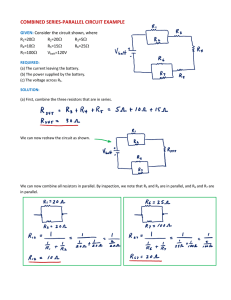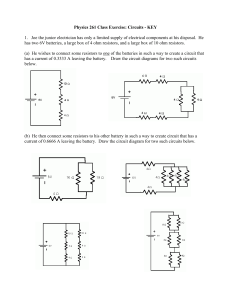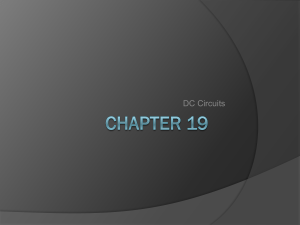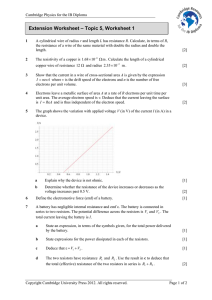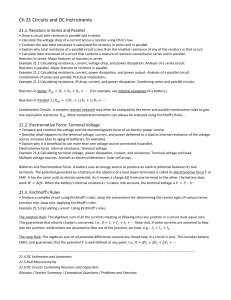Series-Parallel Circuit Example Problem
advertisement
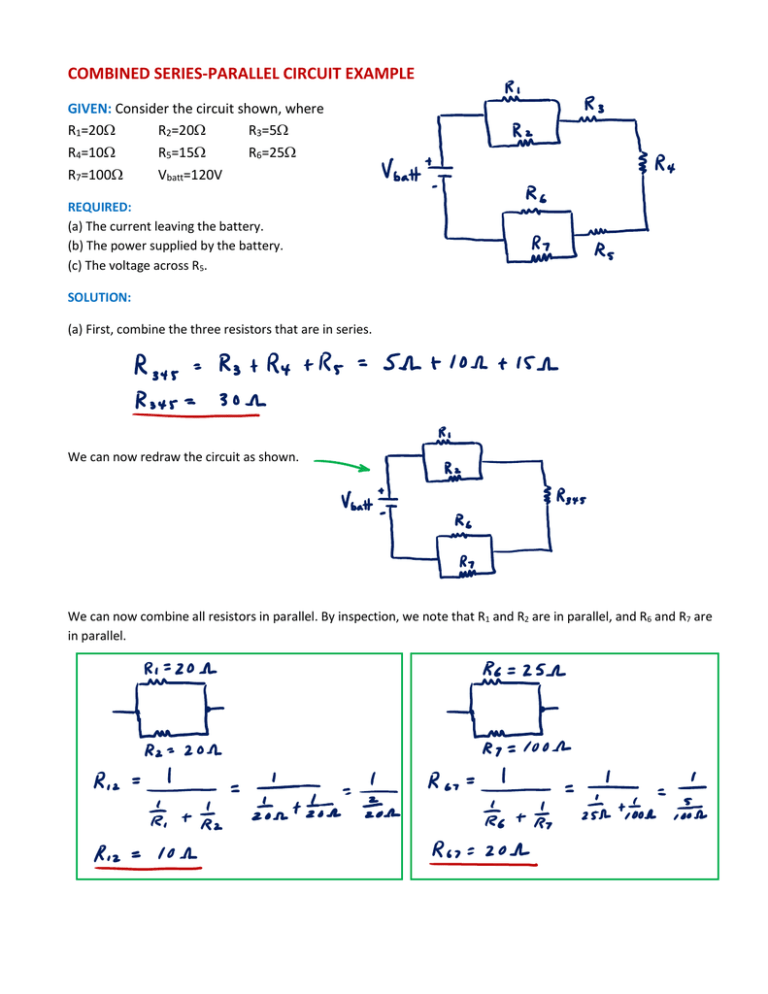
COMBINED SERIES-PARALLEL CIRCUIT EXAMPLE GIVEN: Consider the circuit shown, where R1=20 R2=20 R3=5 R4=10 R5=15 R6=25 R7=100 Vbatt=120V REQUIRED: (a) The current leaving the battery. (b) The power supplied by the battery. (c) The voltage across R5. SOLUTION: (a) First, combine the three resistors that are in series. We can now redraw the circuit as shown. We can now combine all resistors in parallel. By inspection, we note that R1 and R2 are in parallel, and R6 and R7 are in parallel. Again, we can redraw the circuit. We can now find Req by combining all series resistors. Redrawing the circuit once more . . .. Now that we know Req, we can find the current. (b) Now that we know the current leaving the battery AND the battery voltage, we can easily compute the power. (c) The voltage drop across R5 can be computed using Ohm’s Law (we already know the current through R5 as well as the resistance of R5). DISCUSSION: The answers seem reasonable. The combinations of series resistors resulted in equivalent resistances which were greater than any single resistor in the combination, as expected (R345 > R3, R4, R5) The combination of parallel resistors resulted in equivalent resistances less than any single resistor in the combination, as expected. The voltage across R5 was less than the voltage supplied by the battery, as expected.

